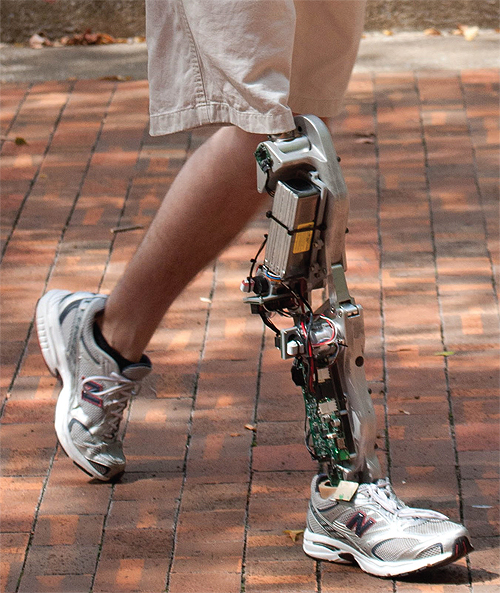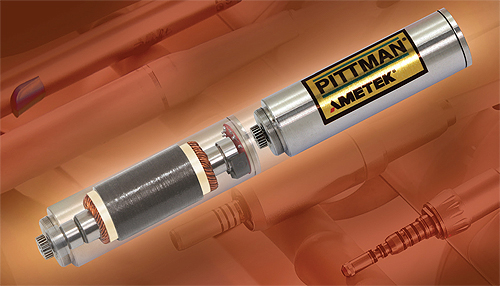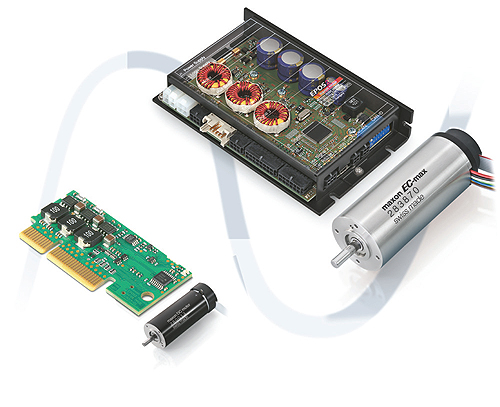by Leslie Langnau, Managing Editor for Design World—
“The driving forces in medical applications today can be reduced to three words: price, performance and reliability, with each being equally critical to the success of modern medical devices requiring any level of motion control,” said Chris Blake, president of maxon precision motors, inc.

Photo courtesy of Vanderbilt University
The move to home care or self-administered therapies often results in highly complex medical systems, such as drug delivery pumps, orthopedic therapy solutions and even dialysis systems. Such products are almost to the point of being consumer electronics. But, as medical devices, they must be more reliable and even easier to use than consumer electronics.
“Plus, the price of these same products must be low enough to make them attractive to insurance providers, and reliable enough to gain the confidence of the broad community of medical professionals,” continued Blake.
Laboratories are another area contributing to trends in motion control. “Labs are beginning to experience the benefits of automation with advances in testing and processing machinery,” said Brian Burke, product manager at Bishop-Wisecarver. “Lab equipment continues to evolve to enable higher throughput and efficiency while providing reliable and repeatable testing results. Automation of complex testing processes will continue to experience growth.”
Key features
Motors and motion control electronics in home care medical devices must be almost fail-safe, especially for consumers. This level of performance is expected from components that are ever smaller.
Efficiency is also critical as almost all home medical devices have some requirement for operation off battery power as a patient is moving through their day so therapy can continue reliably and uninterrupted.
To deliver these features, you’ll see an emphasis on motor features such as small size with high torques, high slot fill, quiet and low or no vibration, autoclavability, and automatic pairing of gearboxes with small motors. One example is the Pittman BI series motors from AMETEK Technical and Industrial Products.

Another option is to use sub-assemblies that quickly and easily integrate into the finished products during final assembly. Bishop-Wisecarver, for example, supplies several medical applications with full sub-assemblies as a service. The benefits include simplified supply chain management and smooth delivery timelines.
Advanced winding techniques, computer aided design and advances in materials, especially magnets, have allowed motors to become substantially smaller today than they were even five years ago, yet with similar or better performance than legacy products.
You will see expanded lead screw nut material options, such as those coming from HaydonKerk Linear Products. Also, expect an expansion in smaller frame size stepper motors and further development of micro screws.
Faster pace
Advances in the equipment and therapies used in medicine today come at an ever increasing pace. Remaining competitive in the current market requires device developers to be much faster with designs, prototyping and market introduction than ever before.
Advances in designs and materials, leading to smaller products with better overall performance, is not enough to be successful. Engineers must also deliver custom products that are highly configurable to the requirements of customers and which can be delivered in days, not weeks.
The DCX motor line and maxon’s “CTO” (Configure to Order) approach, for example, allows custom motor and gearhead configurations to be delivered in days. Such speed helps you move through the design and development phase, and on through FDA approval and market introduction much faster than was possible even one or two years ago.
Further advances in winding technology as well and the development of manufacturing techniques to exploit it will lead to lower manufacturing costs while increasing product performance. Maxon’s DC-Max line has, as an example, resulted in motors with better performance than its predecessor, the RE-Max line, yet at lower costs.

Not to be left unmentioned are the advances in motion control electronics. The medical design engineering professional will have designs that incorporate closely matched control electronics with the programmable flexibility for a low-cost, yet custom design, but without a medical designer needing to worry about the complexity of a highly precise motion control system.
The trend is away from discreet components and toward a “motion system” that is designed with all components in mind such that they perform harmoniously together with as little input as possible from the medical design or their eventual patients.


Leave a Reply
You must be logged in to post a comment.